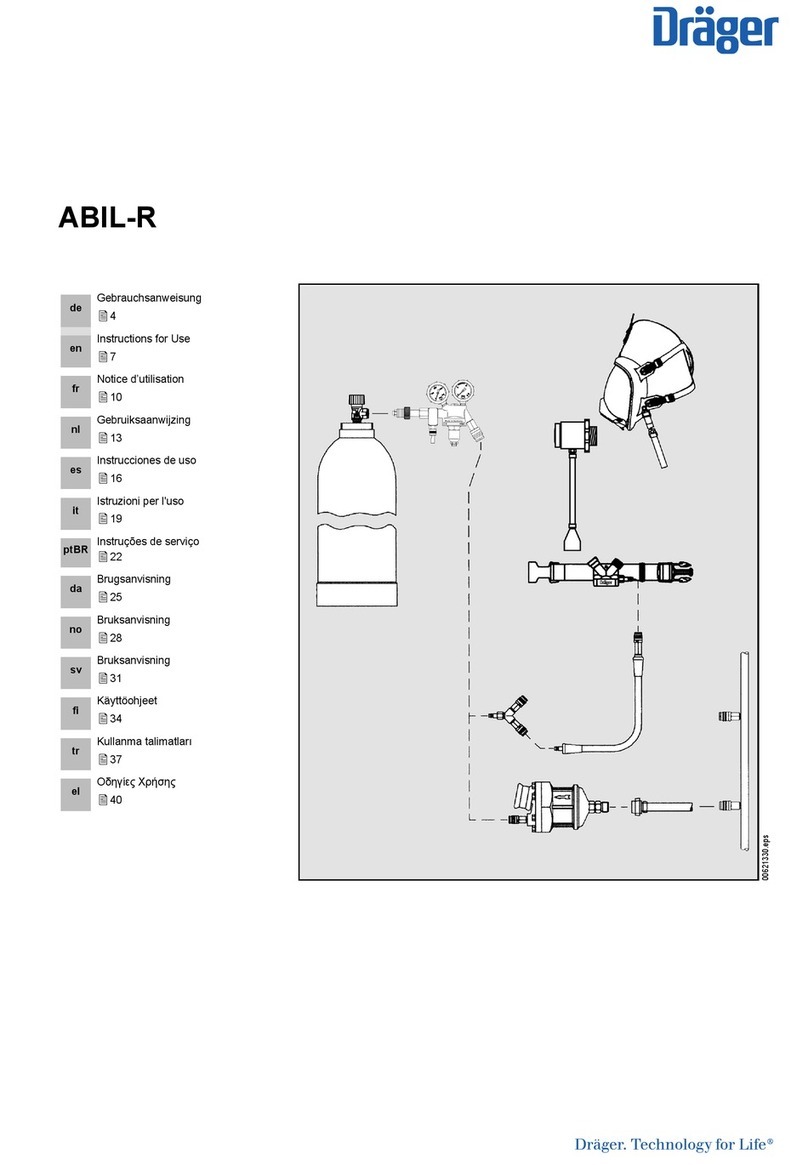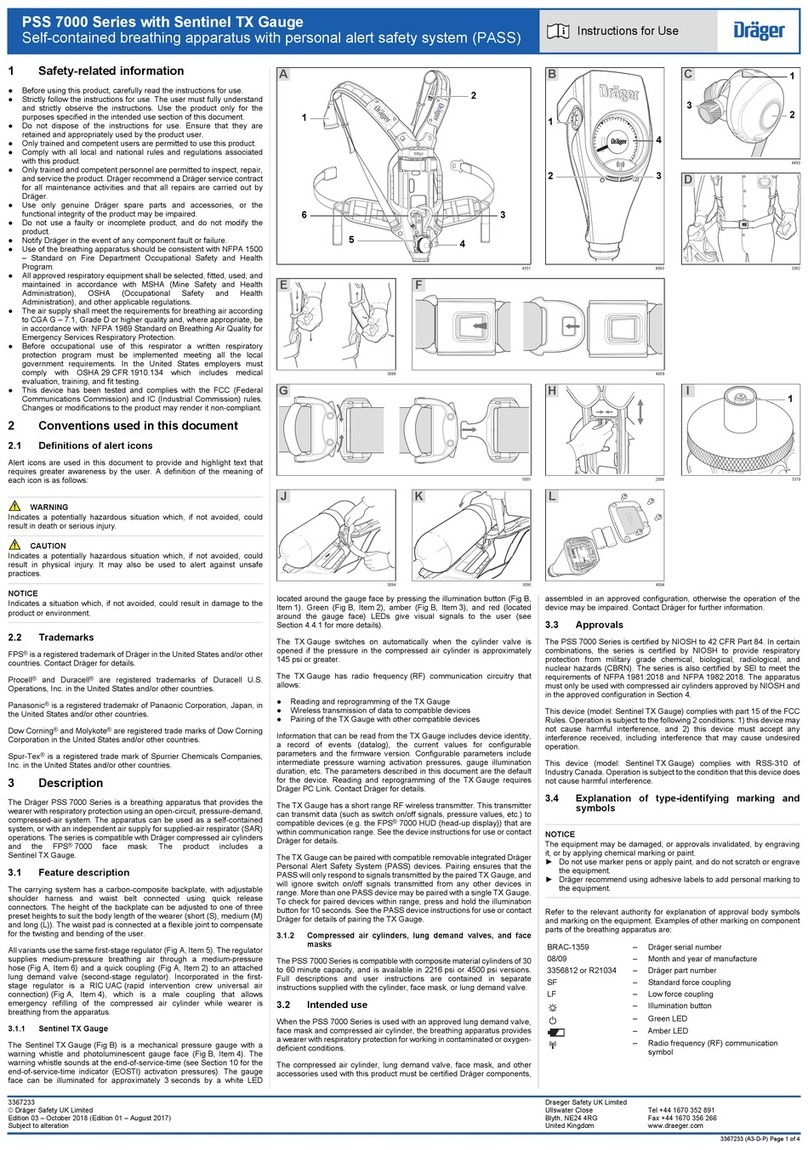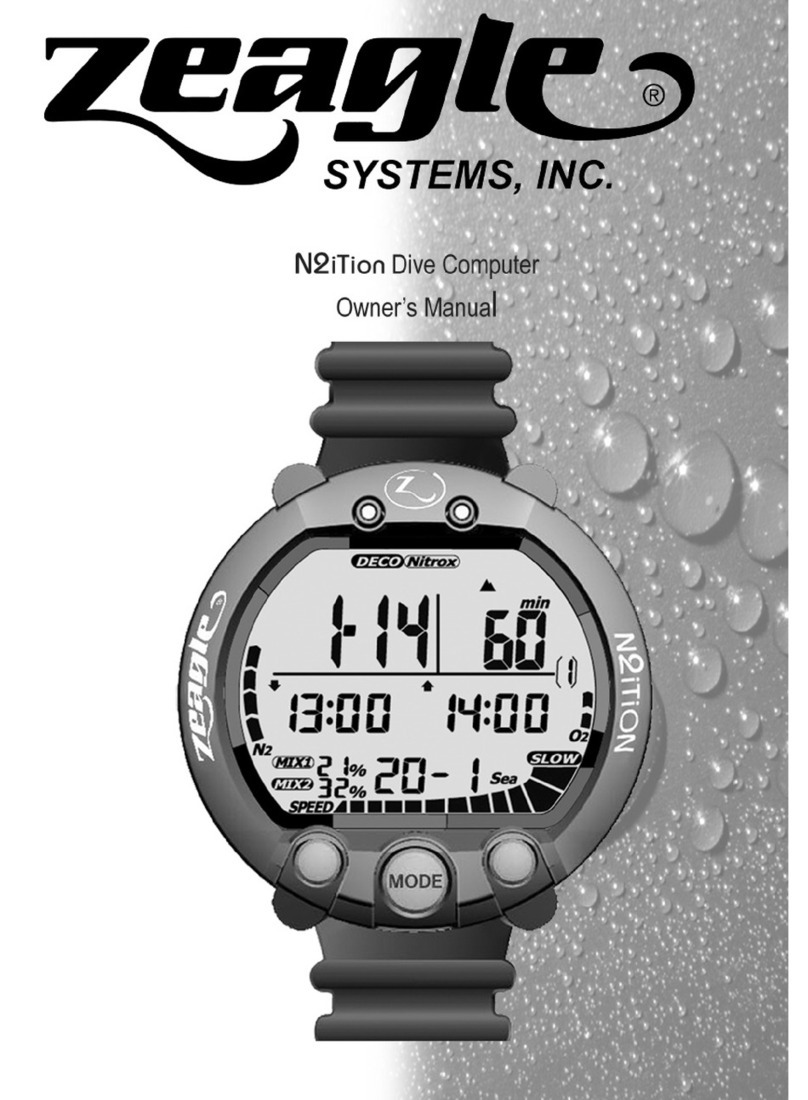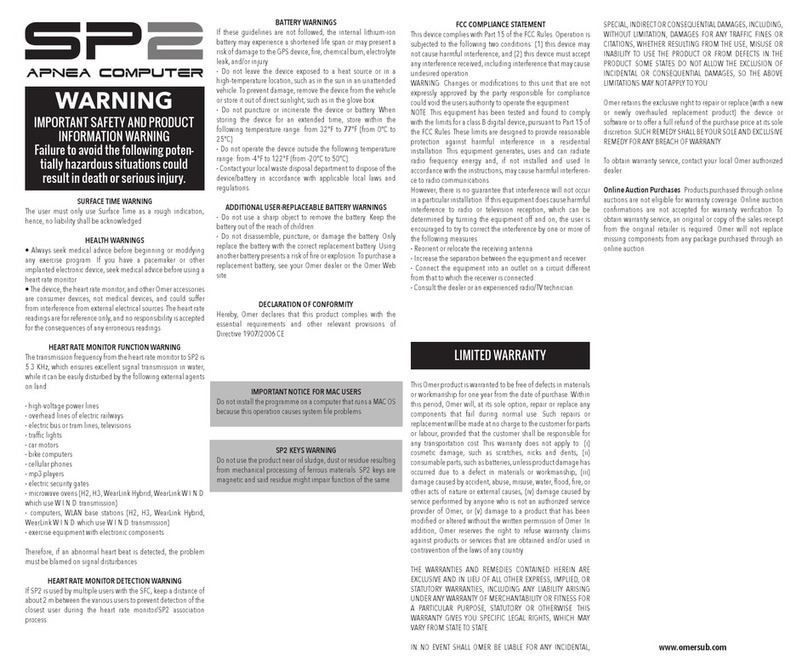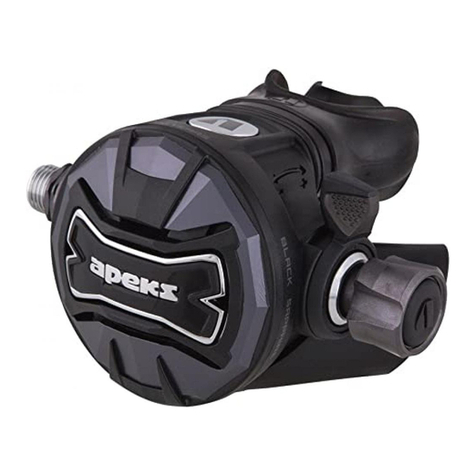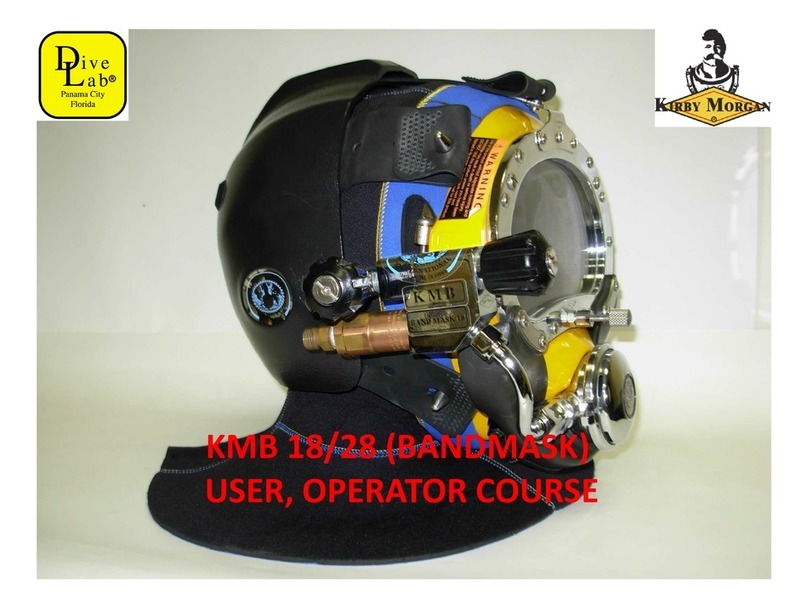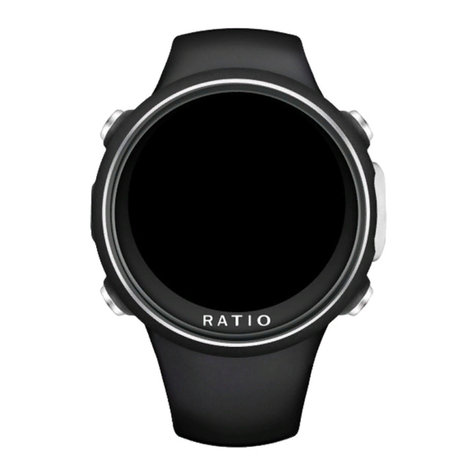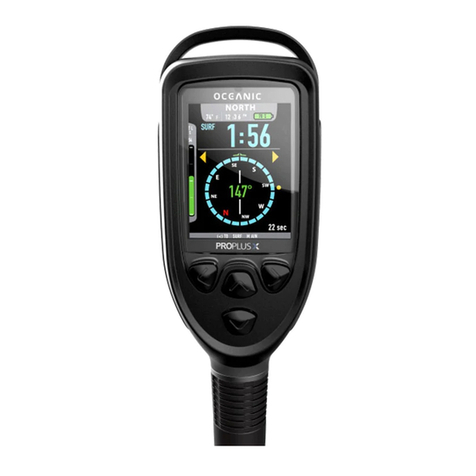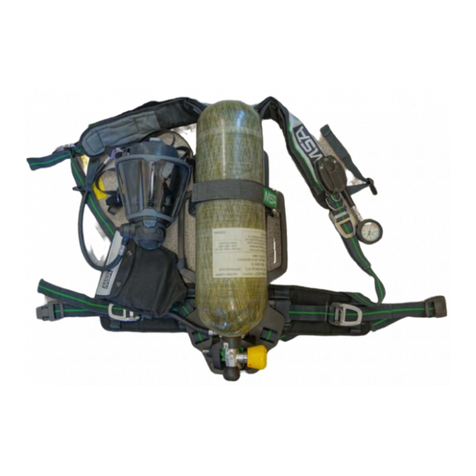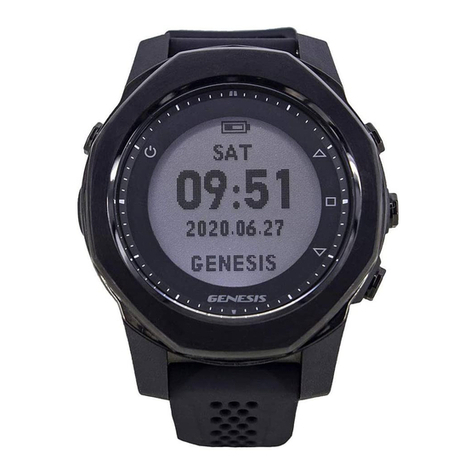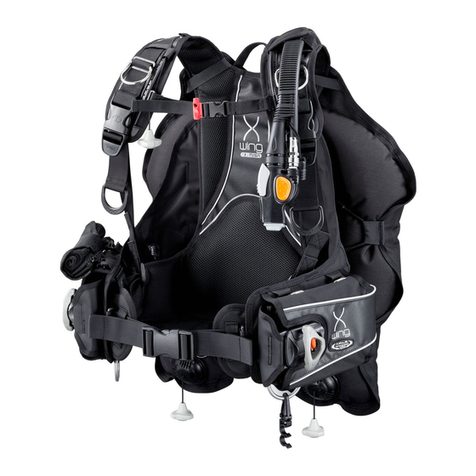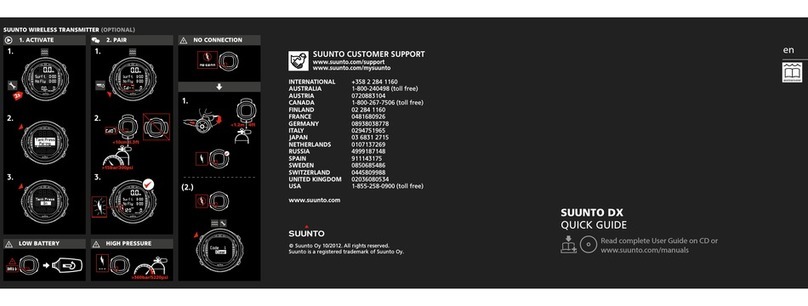6
TheDolphinRebreatherisastate-
of-the-art semi-closed nitrox (oxy-
genenriched air) rebreatherdesi-
gned and built for recreational di-
ving.Whileitsproperusecanpro-
vide for an enhanced recreational
scubaexperience,youmustunder-
stand that as with all rebreathers,
the Dolphin has certain characte-
ristics which can lead to serious
difficulties - or even your death -
should it be used incorrectly or
should there be a malfunction of
sometype.It is critically important
not to attempt to use a Dolphin
without first having been trained
andcertifiedinitsappropriate use
by a nationally recognized certifi-
cation organization such as Tech-
nical Diving International, Interna-
tional Association of Nitrox and
Technical Divers or Rebreather
Advisory Board.
This owner’s manual is designed
tobeaguidelinetotheproperuse
of your Dolphin. It cannot be a
substitutefor thorough, appropria-
te training and certification in the
use of this rebreather, and under
no circumstances should the Dol-
phin be used by anyone who has
not been trained and certified to
use the Dolphin.
This manual could not possibly
containall the information needed
tosafelyusethe Dolphin, but it will
provide the general information
you need in addition to hands-on
trainingandcertification to proper-
lyuse it in the recreationalenviron-
ment for which it was designed.
Thisowner’s manualwill also pro-
vide you with the necessary
manufacturer’s guidelines for
maintenance and service which
must be strictly followed to avoid
your being very badly hurt or kil-
Das Gesetz über technische Ar-
beitsmittel (Gerätesicherheitsge-
setz) schreibt vor, auf folgendes
hinzuweisen1):
Gebrauchsanweisung
beachten
DasDolphin ist einMischgaskreis-
lauf- Tauchgerät nach neuestem
StandderTechnik. Es wurde kon-
struiert für die Verwendung beim
Sporttauchen.AlsKreislauftauch-
gerät zeigt das Dolphin gewisse
gerätespezifische Verhaltenswei-
sen, die bei unkorrekter Benut-
zungdes GeräteszuSchädendes
Benutzers oder sogar zu dessen
Tod führen können. Daher ist es
unbedingt notwendig, daß Sie
nichtmit diesem Gerät versuchen
zutauchen,bevorSienichterfolg-
reich eine Ausbildung zum Kreis-
laufgerätetaucher bei einer von
DrägeranerkanntenAusbildungs-
organisation abgeschlossen ha-
ben.
DieseGebrauchsanweisung wur-
de als Leitfaden für die korrekte
Benutzung des Dolphin geschrie-
ben. Sie kann auf keinen Fall eine
ausführliche Ausbildung zum
Kreislaufgerätetaucher ersetzen.
DieseGebrauchsanweisungkann
nichtalle Informationen enthalten,
diefür die sichere Benutzungdie-
sesGerätesnotwendig sind. Aber
sie enthält alle notwendigen Infor-
mationen, die Sie zusätzlich zur
Ausbildungals Kreislaufgerätetau-
cher benötigen, um dieses Gerät
sicher benutzen zu können.
Diese Gebrauchsanweisung ent-
hält alle notwendigen Informatio-
nen zur Wartung und Instandhal-
tung des Gerätes. Diese müssen
unbedingt beachtet werden, um
schwere persönliche Schäden









